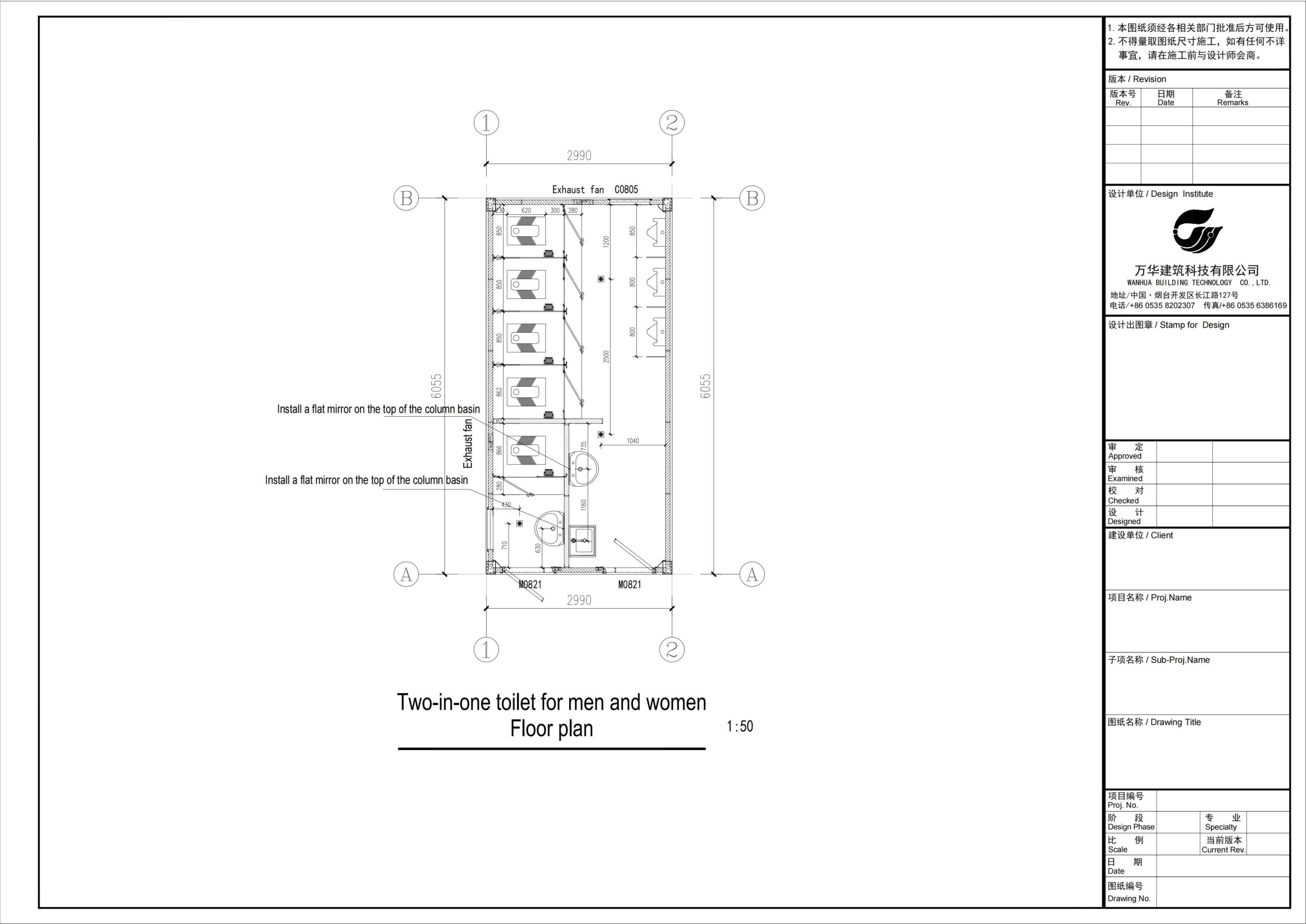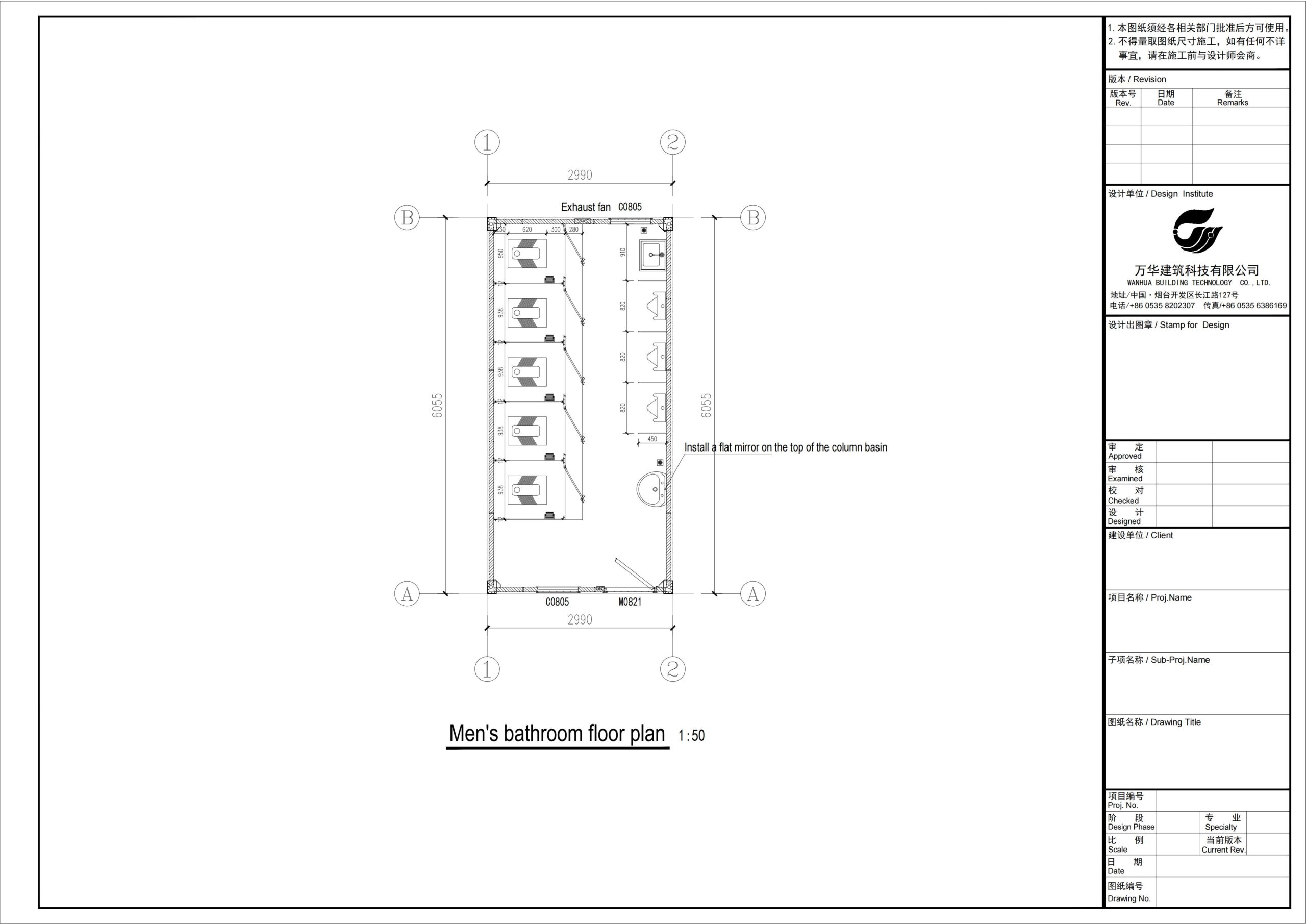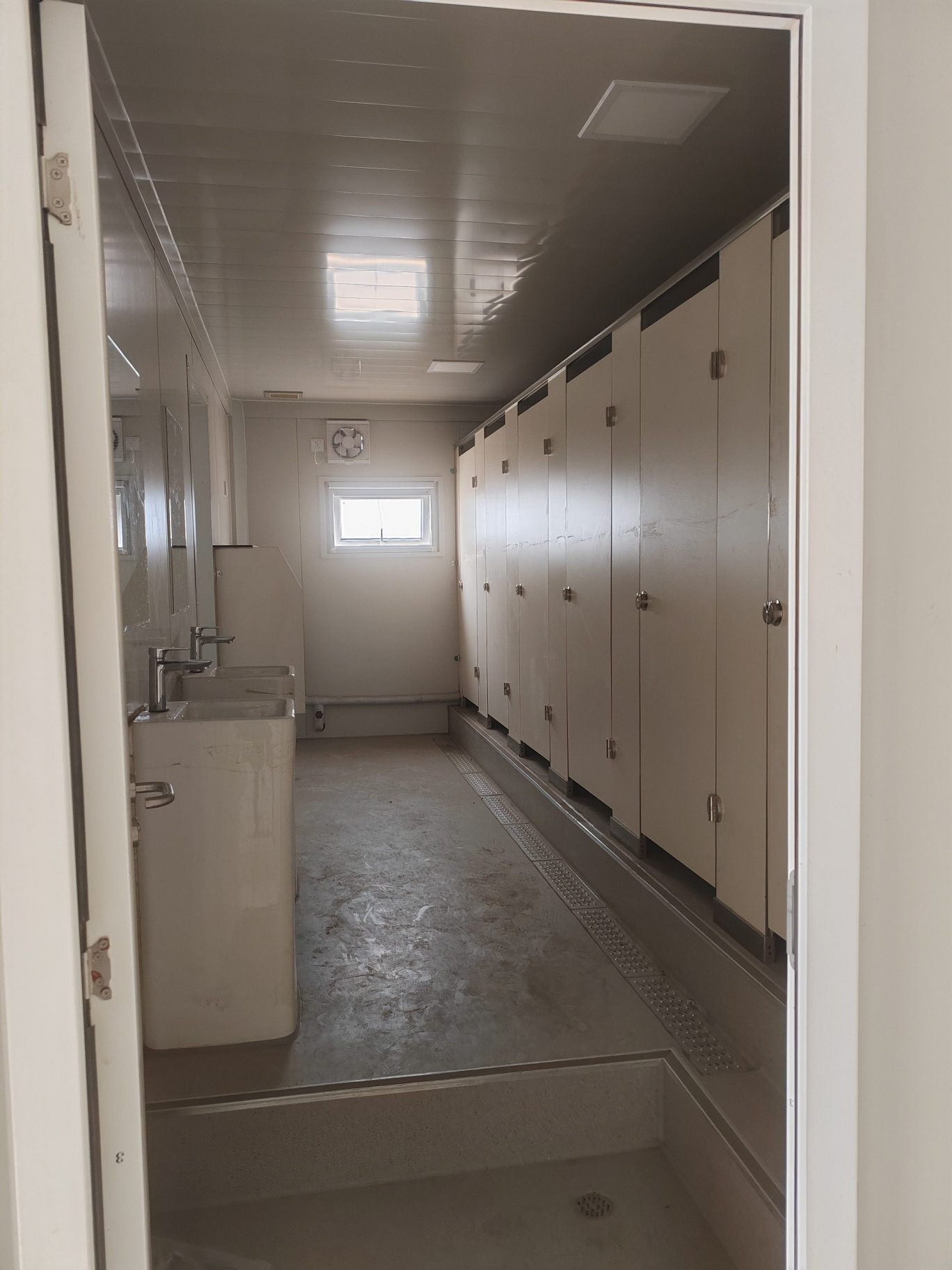Modular Bathroom
Concepts and Principles
A modular bathroom is a design product that decomposes the bathroom into independent functional units (i.e., modules). These modules can be separately developed, manufactured, and maintained in a factory, then transported to the site for assembly. Through standardized interfaces, they achieve interchangeability and integration, forming a complete bathroom system.
Advantages
Convenient Construction
- Shortened Construction Period: Modules are prefabricated in the factory, and on-site assembly is as simple as “building blocks,” significantly reducing construction time. For example, the prefabricated “Smart Public Toilet” at Shenzhen Sports Center completed 90% of prefabrication in the factory using industrial prefabrication technology, with on-site assembly and debugging completed quickly. Compared with traditional construction methods, the construction period was shortened by at least 50%.
- Reduced On-site Disturbance: It reduces on-site wet operations, lowers pollution such as noise and dust, has minimal impact on the surrounding environment and residents, and is conducive to safety management at the construction site.
Flexible Space Utilization
- Flexible Layout: It can be flexibly configured according to the actual space size and user needs. For example, movable partition walls or folding furniture can be used to increase usable space and improve space utilization efficiency.
- Adaptability to Multiple Scenarios: Through vertical/horizontal multi-dimensional splicing and other methods, it can expand from a single bathroom to a combination of multiple functional units, easily achieving functional upgrades and space expansion to meet the needs of different places, such as residences, hotels, schools, hospitals, stadiums, parks, etc.
- Functional Customization: Each module in the bathroom, such as the washing area, shower area, and toilet area, can be selected and combined according to the user’s personalized needs to achieve functional customization. For example, barrier-free passages and spacious washing areas are set up for people with mobility impairments, and safety handrails and non-slip floors are set up for children.
Easy Maintenance
Modular design allows each module to be independently disassembled and replaced. Once a component is damaged, it can be easily disassembled and replaced with a new one, eliminating the need for large-scale renovation or destructive maintenance like traditional bathrooms, simplifying the maintenance process and reducing maintenance costs.
Energy Conservation and Environmental Protection
- Green Building Materials: Environmentally friendly, renewable, and degradable building materials such as bamboo fiber boards and diatom mud are preferred to reduce the environmental burden.
- Resource Recycling: Some modular bathrooms use rainwater collection systems and wastewater recycling technologies to save water resources and reduce sewage discharge; the waste treatment system uses high-temperature aerobic fermentation and black soldier fly biological conversion technologies to achieve resource recycling.
- Energy-saving Equipment: Water-saving bathroom products such as low-flow faucets and showerheads, as well as energy-saving lighting equipment, are selected to reduce energy consumption.
Intelligent Applications
With the development of IoT and artificial intelligence technologies, modular bathrooms pay more attention to intelligence. For example, intelligent modules enable functions such as remote control and self-diagnosis, and can automatically adjust lighting, temperature, humidity, etc., providing users with a more comfortable and convenient experience.
Component Modules
- Sanitary Ware Module: Includes toilets, washbasins, bathtubs, showerheads, etc. These fixtures can be selected and combined according to design requirements to form bathroom areas with different functions.
- Water Supply and Drainage Module: The water supply and drainage systems are designed as independent modules for easy installation and maintenance, ensuring smooth water flow in the bathroom, including water pipes, faucets, drainage pipes, floor drains, etc.
- Electrical and Lighting Module: Covers power sockets, lighting fixtures, switches, wires, etc., providing necessary power supply and lighting conditions for the bathroom while ensuring safe use.
- Wall and Partition Module: Used to divide the space area of the bathroom, provide privacy protection, and also play a role in decoration and beautification. The materials are usually all-aluminum composite panels, glass, plastic, etc.
- Storage Module: Such as bathroom cabinets, wall cabinets, and closets, used to store toiletries, towels, bathrobes, etc., keeping the bathroom clean and tidy.
The standard box size is 6055*2990*2896mm in length*width*height. If you have special size requirements, you can also customize it. The following pictures are customized other sizes




 The standard box size is 6055*2990*2896mm in length*width*height. If you have special size requirements, you can also customize it. The following pictures are customized other sizes
The standard box size is 6055*2990*2896mm in length*width*height. If you have special size requirements, you can also customize it. The following pictures are customized other sizes 











